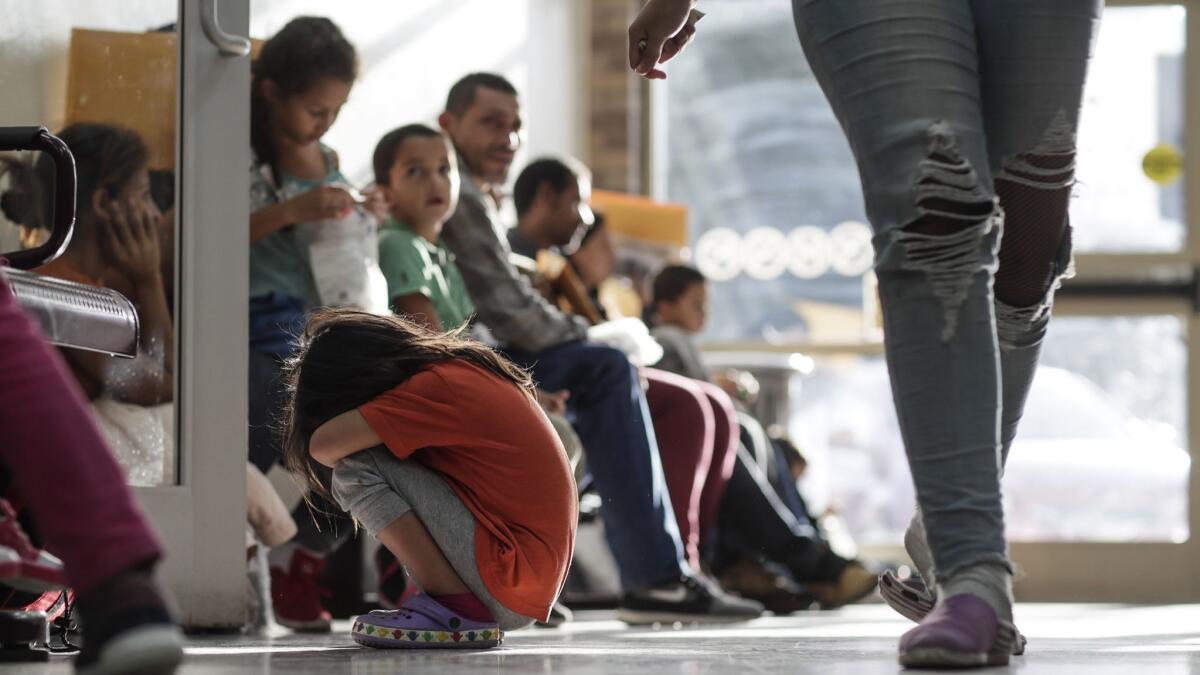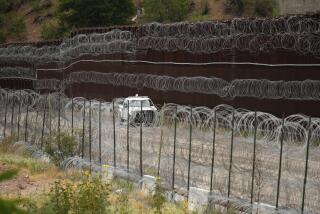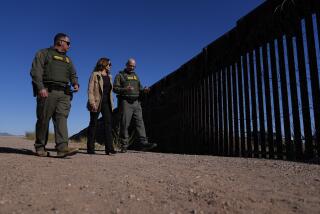Illegal border crossings decrease in June, the first time in 2018

Reporting from SAN DIEGO â Fewer people were caught crossing the U.S.-Mexico border illegally in June than in the previous three months, the first time the number of arrivals decreased in 2018.
The number of people caught crossing decreased about 15% from May to June, according to data from Customs and Border Protection. Border Patrol agents apprehended 40,344 people crossing the Southwest border illegally in May and 34,114 people in June.
For the record:
3:55 p.m. July 7, 2018An earlier version of this story said 9,485 family members were apprehended crossing illegally into the U.S. in June. That is how many crossed in May.
The number of people coming to ports of entry along the border without documents necessary to come into the U.S., called âinadmissiblesâ by Customs and Border Protection, also dropped about 27%, from 11,568 in May to 8,451 in June.
Along the California border, arrivals mirrored the border-wide trend from May to June. Border Patrol agents apprehended 5,343 people along the California border in June, a 12% drop from the 6,102 apprehended in May. The number of inadmissibles along the California border dropped 30%, from 3,302 in May to 2,296 in June.
The Trump administration pointed to its âzero-toleranceâ policy, implemented at the beginning of May, as a reason for the decline.
âDHS will continue to enforce the rule of law and uphold our nationâs immigration laws as passed by Congress,â said Tyler Houlton, spokesman for the Department of Homeland Security. âAs we have said before, the journey north is dangerous and puts individuals in the hands of smugglers and traffickers. We continue to call on Congress to address the crisis at the border by closing legal loopholes that drive illegal immigration.â
Under the zero-tolerance policy, Homeland Security refers everyone caught crossing the border illegally to the Justice Department for prosecution. (That does not include inadmissibles at ports of entry, who are not attempting to cross without inspection.)
Previously, prosecutors focused on repeat offenders. Asylum seekers and families caught crossing went through the immigration system to determine whether they would be allowed to stay in the country but often did not face criminal charges.
In its first month, the zero-tolerance policy caused families to be split as parents were sent for criminal prosecution and their children went to facilities intended for youth who arrived at the border alone. The administration hoped the policy would keep migrants from coming to the U.S., particularly asylum seekers from Central America.
After public outcry over the separations, President Trump adjusted the policy on June 20 so that families would be held in custody together.
The Department of Health and Human Services has said that about 3,000 children were separated from parents and placed in its custody. Those families have not been reunited. A judgeâs order from a class-action lawsuit over the issue called for parents and children to be reunited before the end of July.
Though some families were split both at ports of entry and when caught crossing illegally before the zero-tolerance policy went into effect, Juneâs totals suggest that the policy may have deterred families from deciding to cross.
The number of family members caught illegally crossing the border dropped more than the overall change in illegal border crossings. Border Patrol agents apprehended 4,836 people who were crossing with family in June, a 49% drop from the 9,485 family members apprehended in May.
Since at least December, asylum seekers have often had to wait weeks for the San Ysidro Port of Entry in San Diego to have room to process them. Those lines out the door have recently spread to other parts of the border with officials in Texas and Arizona also making asylum seekers wait in Mexico.
Organizations that monitor Southwest border migration said factors besides the zero-tolerance policy could have contributed to the overall month-to-month changes.
Itâs common for numbers to decline from May to June because migrants are less likely to attempt the journey in hot summer months, according to Adam Isacson of the Washington Office on Latin America.
âBorder Patrol almost always measures fewer migrant apprehensions in June compared to May,â Isacson said. âA seasonal drop is normal. Itâs scorchingly, dangerously hot in the arid deserts along the Southwest border.â
Since at least 2000, the only year that Border Patrol apprehensions went up between May and June was in 2017, when arrivals increased steadily over the summer after dropping sharply at the beginning of Trumpâs term in office. Every other year saw a decrease going into the summer.
Morrissey writes for the San Diego Union-Tribune.
More to Read
Sign up for Essential California
The most important California stories and recommendations in your inbox every morning.
You may occasionally receive promotional content from the Los Angeles Times.










